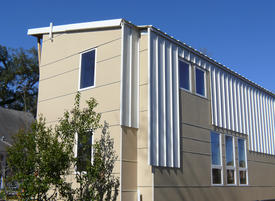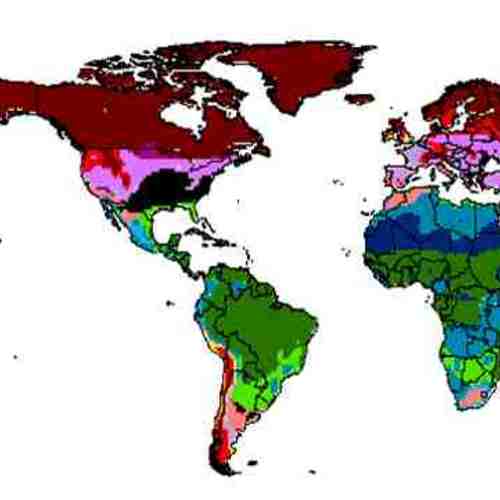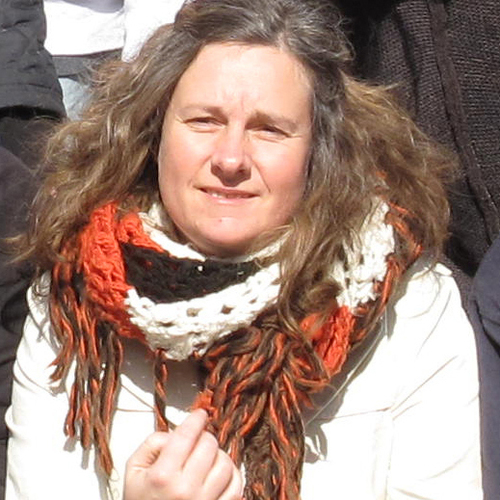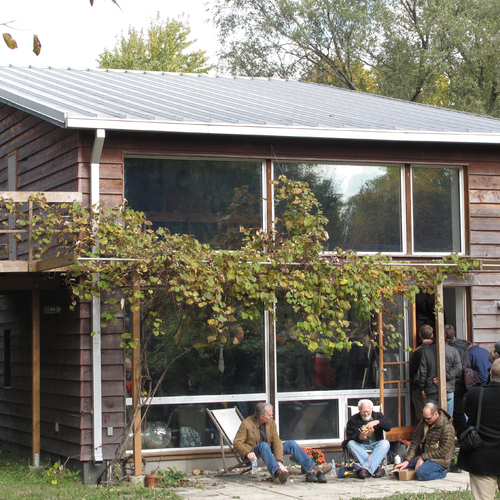Image Credit: Corey Saft (image 1), Passive House Institute US (image 2)
Image Credit: Corey Saft (image 1), Passive House Institute US (image 2) Passive House Institute US data through March 2010.
Readers of Environmental Building News have had about a month to contemplate some of the talking points raised in an EBN article and accompanying blog about the Passivhaus standard and, in a purely hypothetical discussion, the merits (or demerits) of slightly altering the standard to accommodate small homes and North America’s various climate zones.
The author of the article, EBN Executive Editor Alex Wilson, summarizes Passivhaus history, highlights the standard’s considerable benefits and its technical underpinnings, and then introduces a few ideas intended to make the Passivhaus standard, which enjoys relatively wide adoption in Western Europe, more of a force on this side of the Atlantic. Wilson offers suggestions relevant to Passivhaus criteria in three areas:
• Heating and cooling requirements, which allow a maximum of 15 kWh/m2/yr (4,755 Btu/ft2/yr) for heating or cooling. For total “primary” energy consumption, including heating, cooling, water heating, lighting, and appliances, the standard allows 120 kWh/m2/yr (38,000 Btu/ft2/yr). In very cold or very hot climates, Wilson says, he recommends relaxing the heating and cooling requirements but maintaining the total primary energy consumption limit. He adds that in very cold climates, where little or none of the 15 kWh/m2/yr for cooling will be needed, it might make sense to allow some of that energy to be used for heating. Similarly, for hot climates, where little or no space heating is needed, it would seem reasonable to allow some of that energy to be used for cooling.
• Small houses, which, because Passivhaus energy-consumption limits are based on floor area, have a significantly harder time meeting the energy standard than do larger houses. Likewise, the Passivhaus airtightness standard – 0.6 air changes per hour with a 50 pascal pressure difference across the envelope (ACH50) – is tougher for small houses to meet because it is based on air changes per hour rather than cubic-feet-per-minute of air leakage per unit area of envelope. Wilson suggests relaxing the airtightness standard enough to offset that bias, and easing the energy consumption limit by allowing an additional 2 kWh/m2/yr for heating or cooling if the house is under a certain size (he suggests 100 m2 (1,076 ft2).
• Existing buildings, where, because North America’s housing stock is so vast, there is enormous opportunity for energy savings (and increased occupant comfort) but also often daunting and expensive challenges to improving energy efficiency significantly, never mind to the Passivhaus standard. The recommendation: convening a panel of leading energy experts who are familiar with North America’s housing stock—and also committed to dramatic reductions in building-energy use—to come up with a reasonable “Passive House Retrofit Standard for North America.” (For example, energy consumption limits about double what the standard currently requires for new buildings – 30 kWh/m2/yr, say, for heating and the same for cooling, and an airtightness standard raised from 0.6 to 1.5 ACH50.)
Reader responses to these suggestions show a striking level of commitment to the performance demands of the standard (many are not crazy about the idea of relaxing the airtightness requirement) and also to the standard’s overarching benefits, including extraordinary energy efficiency, interior comfort, durability. Naturally, though, there’s also a keen interest in increasing the affordability and market appeal of Passivhaus construction, as well as various combinations of energy efficient construction and renewable-energy systems that bring a building’s performance to net zero energy, or very near it.
Paul Torcellini, a National Renewable Energy Laboratory engineer who has worked actively on the Department of Energy’s zero-energy initiative, told EBN that net-zero-energy should be as good as Passive House. “I like the idea of a number, and zero is the best number,” he said. “The beauty of net-zero is that it’s really hard to game the system if you follow the established definitions.”
“How can you tell me that a net-zero house is worse than a Passive House?” added building science engineer John Straube, who is both a Passivhaus admirer and critic.
As homeowners and prospective homeowners catch on to green building concepts, it seems likely net-zero-energy homes and, eventually, homes that meet the Passivhaus standard will seem less exotic and more attainable. As Wilson points out, the development of Passivhaus buildings in the U.S. is slow, but manufacturers and suppliers are starting to pay attention. And that could be a very good thing as homeowners and builders try to find the sweet spot in calculations of cost, performance, and comfort.
Weekly Newsletter
Get building science and energy efficiency advice, plus special offers, in your inbox.
















0 Comments
Log in or create an account to post a comment.
Sign up Log in